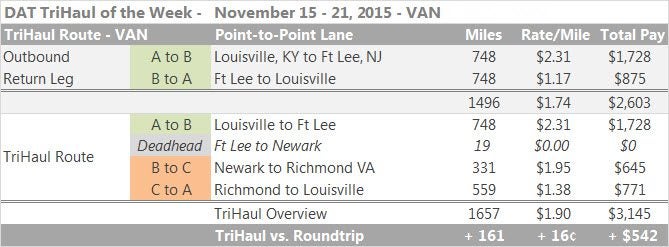An article in Fleet Owner caught my eye this week: “New Report Identifies Major Highway Choke Points and Their Costs.”
I downloaded the report from the American Highway Users Association. It had a catchy subtitle: “America’s 50 Worst Bottlenecks.” The 64-page report is worth reading, and it has a lot of great detail about the evils of congestion, including a lot of complicated math, a list of those 50 bottlenecks, the average length of each traffic jam in miles, plus a section about highways that have been improved due to recent construction.
I glossed over all of that, and flipped straight to the chapter about big trucks. Let’s be honest. When a semi is stuck in traffic, it’s going to cost some real money. If it’s just me and my station wagon? Not so much.
The truck-specific section included material from the American Transportation Research Institute (ATRI) and featured this list of the ten worst bottlenecks in the U.S. for big trucks, in particular:

The worst of the worst was in Atlanta, followed by Chicago. Four of those bottlenecks were in Houston. But I was in the middle of writing a new feature for owner-operators, called “The Worst Lane in America,” and I decided to focus on Fort Lee, NJ. (I grew up in NY City, and even after 20 years in Portland, I still shudder when I remember those epic traffic jams!) I looked specifically at the lane between Fort Lee, NJ and Louisville, KY, because those metro areas were #3 and #4 on the list, respectively.
Getting out of New Jersey in a truck is always difficult – especially when you’re right near a major bridge into Manhattan. Worse, there aren’t a lot of loads out. When you do find a load, the rates are low – last week, only $1.17/mile to Louisville. Plus, there is almost no way to get all the way back to Louisville without driving empty for 100 miles or more.
Even so, if you can complete the roundtrip in three days from Louisville to Fort Lee and back with relatively low deadhead, just go for it. If your trip spills over into a fourth day, however, you should look for a TriHaul opportunity.
With less than 20 empty miles, this TriHaul was the winner. I found the TriHaul route and the loads on DAT Power load board. The route includes a short deadhead to Newark. It’s only 20 miles, but traffic is going to be a problem, so give yourself extra time.
TriHaul: Louisville – Fort Lee (Newark) – Richmond – Louisville

Pick up a load in Newark to Richmond, VA. Rates are much better on that lane, compared to loads that take you closer to Louisville. Rates aren’t great out of Richmond, generally, but the traffic is not nearly as bad as those metro areas in New Jersey, or even Louisville.
Find a second load from Richmond to Louisville. You’ll end up with an additional $541 in your pocket for the roundtrip.
Here’s how it pencils out for vans this week:

TriHaul route suggestions are offered in DAT Express and DAT Power load boards, and rates are derived from DAT RateView.


